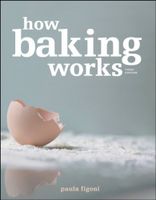Advertisement
A Description of the Process of Egg Coagulation
By Paula Figoni
Published 2003
As eggs are heated, proteins in both the whites and the yolks gradually denature or unfold (Figure 10.6). The unfolded proteins move through the liquid and bond (aggregate) with one another. In fact, protein coagulation is sometimes called protein aggregation. Properly aggregated egg proteins form a strong yet often flexible network that traps water and other liquids.
The more eggs are heated, the more egg proteins aggregate, and the tighter, firmer, and more rigid the protein network becomes. Eventually, the proteins overcoagulate, shrinking and squeezing out liquids, much as a sponge shrinks and releases water when it is wrung. Overcoagulation is sometimes called curdling, and it results in weeping or syneresis, where bits of tough gel float in pools of squeezed-out liquid.

